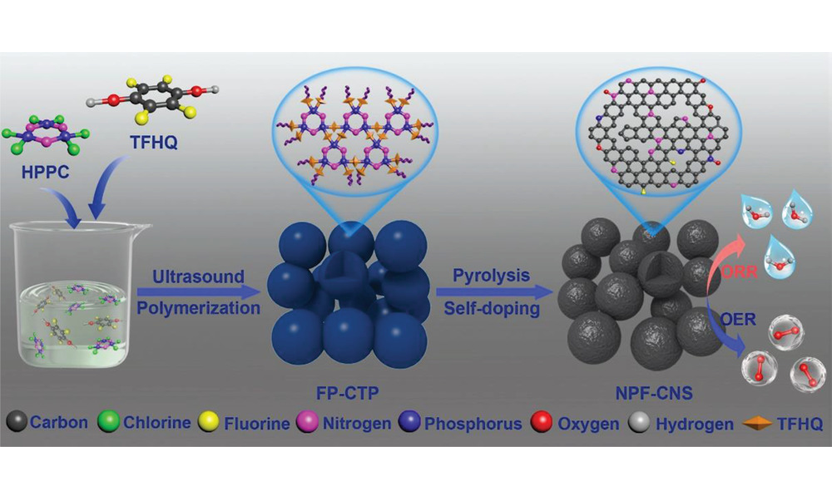Metal‐Free Multi‐Heteroatom‐Doped Carbon Bifunctional Electrocatalysts Derived from a Covalent Triazine Polymer

The construction of multi‐heteroatom‐doped metal‐free carbon with a reversibly oxygen‐involving electrocatalytic performance is highly desirable for rechargeable metal‐air batteries. However, the conventional approach for doping heteroatoms into the carbon matrix remains a huge challenge owing to multistep postdoping procedures. Here, a self‐templated carbonization strategy to prepare a nitrogen, phosphorus, and fluorine tri‐doped carbon nanosphere (NPF‐CNS) is developed, during which a heteroatom‐enriched covalent triazine polymer serves as a “self‐doping” precursor with C, N, P, and F elements simultaneously, avoiding the tedious and inefficient postdoping procedures. Introducing F enhances the electronic structure and surface wettability of the as‐obtained catalyst, beneficial to improve the electrocatalytic performance. The optimized NPF‐CNS catalyst exhibits a superb electrocatalytic oxygen reduction reaction (ORR) activity, long‐term durability in pH‐universal conditions as well as outstanding oxygen evolution reaction (OER) performance in an alkaline electrolyte. These superior ORR/OER bifunctional electrocatalytic activities are attributed to the predesigned heteroatom catalytic active sites and high specific surface areas of NPF‐CNS. As a demonstration, a zinc‐air battery using the NPF‐CNS cathode displays a high peak power density of 144 mW cm−2 and great stability during 385 discharging/charging cycles, surpassing that of the commercial Pt/C catalyst.
